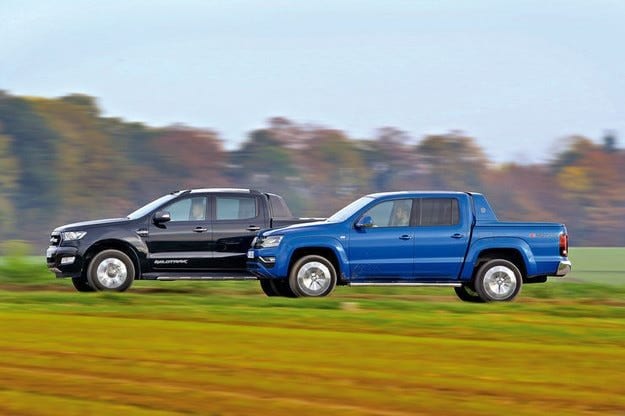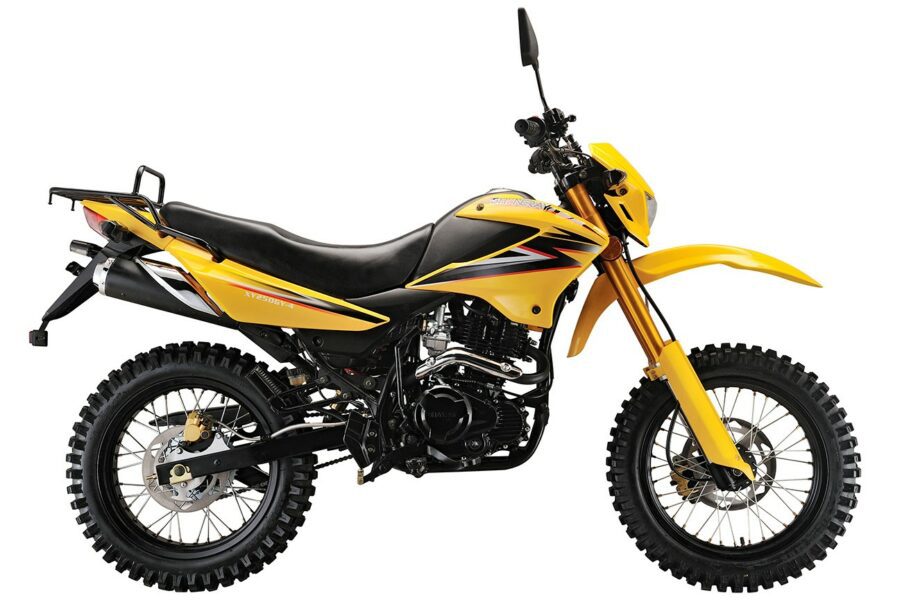
Test drive Ford Ranger 3.2 TDCI and VW Amarok 3.0 TDI: pickups for Europe
Content

To be different, today you need more than just an SUV model or an SUV.
Do you consider yourself a cool character and need a suitable vehicle? Then you should think of one Ford Ranger 3.2 TDCi or VW Amarok 3.0 TDI. We've put the power pickups to the test to see which is the best.
SUVs were an alternative for individuals only before the big explosion in their popularity - they are now part of the mainstream, even more so than station wagons or vans have ever been. However, pickups remain for private individuals. They have no idea that they will cause a fashion wave or that they will become part of the mainstream. In the United States, the Ford Ranger took on the role of a rough but cordial friend back in 1982, and as such is a sort of benchmark against which to compare the VW Amarok.
In European realities, pickup trucks rarely cross riverbeds or steppes. They do not even make their way through the forest bushes, because cars are prohibited in most of the surviving forests. Instead, when you sit in them and sit comfortably, looking from your high position at the surrounding traffic, Ranger and Amarok seem to you quite a serious alternative to SUV models - original and durable.
Real family cars?
In the US, a Ford pickup can easily be used as a family car; It may seem absurd at first, but the double cab version can actually accommodate three children in the rear seats. It's the same, of course, with the bigger, wider VW - it even offers even more space in the cabin, better contoured front seats and more rear legroom. Well, yes, the cargo platform must be equipped with at least a lid to act as a trunk. On the other hand, the open solution is especially suitable for really bulky loads. For example, an XL Christmas tree.
You can easily cut it yourself - only in the permitted place! - and lead her out of the forest. When you're riding in a dual-drive pickup truck, there's no need to be afraid of getting stuck. For better off-roading in the Ranger, the front axle is also activated with a switch because the vehicle is normally driven in reverse. In addition, you can pre-downshift and activate the differential lock. On the other hand, the Amarok's continuous dual transmission does not offer "slow" gears, but only offers one lock-up, so it scores less points in the traction rating. Both models have a descent assistant and the brake pedals have a soft setting for better metering.
Amarok pumps less
Of course, in this regard, modern SUVs offer more equipment and pamper their drivers with specially adapted 4x4 modes for rough off-road transitions. But the gap of more than 20 cm, the solid support frame and the main components for the double transmission of pickups are enough to overcome more serious obstacles.
In any case, when the asphalt is over, there is nothing to be afraid of - although, most likely, you will drive a pickup truck mainly on paved roads. In them, the Ranger usually exhibits greater proximity to the trucks – with the five-cylinder turbodiesel channeling its 470Nm to the rear axle, traction is reached quickly even in the dry, and the unloaded wheel turns when accelerating out of a corner.
The Amarok, which has a permanent dual transmission, knows no such weaknesses - it behaves more like a large SUV and, compared to the Ranger, overcomes corners with less hesitation, provides more feedback to the road through the steering system, and does not even resist-dynamic driving. . On the highway, it can reach 193 km / h according to the factory, and this seems realistic, because it follows a direction that is quite stable for such speeds.
Ford Ranger about 10 euros cheaper
Here, pickup lovers can yell in protest that their pets are never speeding, so VW's edge is irrelevant. But let's ask: why give it up when it's technically possible - without sacrificing comfort? Because the Amarok rides a lot smoother than the strong Ranger. The American's chassis makes different noises when driving on a bad road, and is noisier at first than a better insulated VW.
The three-liter V6 Amarok, replacing the previous two-liter four-cylinder, is far less impressive with its diesel engine than the conventional Ford five-cylinder. Although there is undoubtedly a charming touch to his slightly unbalanced gait. But when you're on a long journey, the principle of self-ignition begins to imprint in your memory with the authentic thump of a diesel engine, and the Ranger runs at a higher revs than the Amarok, which is designed with a longer "gear ratio".
In terms of gears, the result is not an eight or six in favor of the VW - its torque converter automatic shifts just as smoothly as Ford's traditionally quiet transmission, but makes it quicker. The fact that the eight gears are more closely spaced and the higher torque of 80 Nm improves acceleration performance. And according to subjective sensations, Amarok rushes forward more vigorously, accelerates more powerfully when overtaking, if necessary, it could carry more cargo - if it were allowed. Because in terms of payload, the Ranger makes a big difference, making Ford the best cargo carrier. If you want to haul heavier items with a VW pickup, you'll need to order extra heavy duty suspension and accept some comfort restrictions.
Both cars consume 10,4 liters of diesel fuel per 100 km. Thus, there is equality in fuel costs. But even with zero mileage, VW customers pay more – after all, they have to count about 50 euros for a powerful Amarok, and 000 euros for a test car (with Aventura equipment). Much cheaper than the Ranger, which has a 55 hp version. starts at 371 euros, and in the highest of the three equipment lines, the price, together with an automatic transmission, starts at 200 euros.
Low technology at low cost?
In both cases, there are prices that willing buyers cannot easily swallow. And this is understandable - after all, low manufacturability is expected from a pickup truck at a low price. But in high equipment, both testers boast a lot of things that are difficult to associate with a van.
Both pickups have on board automatic air conditioning, a small navigation system and cruise control. The Ranger has a partially leather-wrapped dashboard, the Amarok has power-adjustable leather seats. In terms of additional features, it surpasses Ford with 20-inch wheels, bi-xenon headlights and a modern multimedia line. The Ranger can only counter this with its slightly richer equipment with driver assistants. However, the gap in stop-test scores is getting worse. At 100 km/h, the Ranger nails into place more than two meters late, and at 130 km/h, four meters, which is the length of a small car. Here, as in driving in general, the Amarok presents a more modern design and wins the tests by a significant margin despite the higher price.
Text: Markus Peters
Photo: Hans-Dieter Zeifert
Evaluation
1. VW Amarok 3.0 TDI – 367 points
The Amarok is a more modern pickup truck, rides like a large SUV, offers more space, brakes better and accelerates harder than the Ranger. However, it is expensive.
2. Ford Ranger 3.2 TDCi – 332 points
Ranger is a good representative of traditional American-style pickups. He drives with heavy loads, but on the road can not compete with the Amarok.
technical details
| 1.Vw Amarok 3.0 TDI | 2.Ford Ranger 3.2 TDCi | |
|---|---|---|
| Working volume | 2967 cc cm | 3198 cc cm |
| Power | 224 k.s. (165 kW) at 3000 rpm | 200 k.s. (147 kW) at 3000 rpm |
| Maximum torque | 550 Nm at 1400 rpm | 470 Nm at 1500 rpm |
| Acceleration 0-100 km / h | 8,0 with | 11,2 with |
| Braking distances at a speed of 100 km / h | 36,7 m | 38,9 m |
| full speed | 193 km / h | 175 km / h |
| Average consumption fuel in the test | 10,4 l / 100 km | 10,4 l / 100 km |
| Base Price | 55 371 EUR (in Germany) | 44 833 EUR (in Germany) |
Home " Articles " Blanks » Ford Ranger 3.2 TDCI and VW Amarok 3.0 TDI: pickups for Europe
